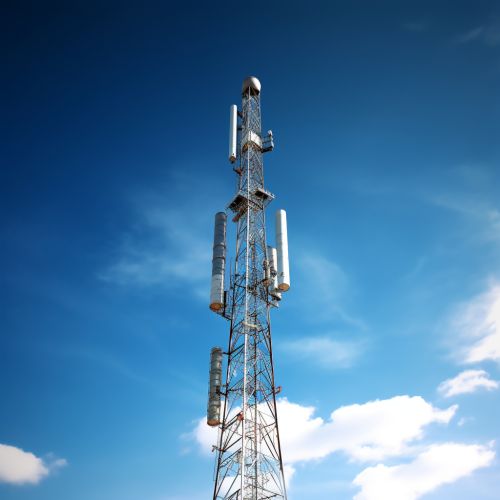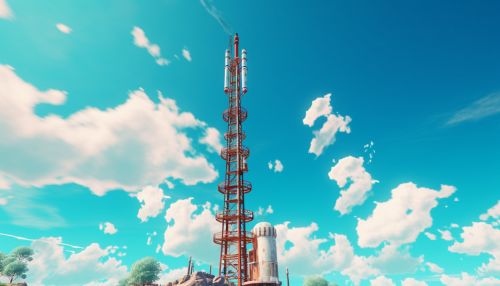Telecommunication
Introduction
Telecommunication is the transmission of signs, signals, messages, words, writings, images and sounds or information of any nature by wire, radio, optical or other electromagnetic systems. Telecommunication occurs when the exchange of information between communication participants includes the use of technology. It is transmitted through a transmission medium, such as over physical media, for example, over electrical cable, or via electromagnetic radiation through space such as radio or light. Such transmission paths are often divided into communication channels which afford the advantages of multiplexing.
History
The history of telecommunication began with the use of smoke signals and drums in Africa, Asia, and the Americas. In the 1790s, the first fixed semaphore systems emerged in Europe. However it was not until the 1830s that electrical telecommunication systems started to appear. This article details the history of telecommunication and the individuals who helped make it possible.
Telecommunication Networks
A telecommunication network is a collection of terminal nodes, links and any intermediate nodes which are connected so as to enable telecommunication between the terminals. The transmission links connect the nodes together. The nodes use circuit switching, message switching or packet switching to pass the signal through the correct links and nodes to reach the correct destination terminal. Each terminal in the network usually has a unique address so messages or connections can be routed to the correct recipients. The collection of addresses in the network is called the address space.
Modern Telecommunication
Modern telecommunication centers on the problems involved in transmitting large volumes of information over long distances without damaging loss due to noise and interference. The basic components of a modern digital telecommunications system must be capable of transmitting voice, data, radio, and television signals.
Telecommunication Systems
A telecommunication system is a system of devices and subsystems which are used for long-distance transmission of information. The system uses a specific set of protocols to transfer data and information from one device to another. The devices used in telecommunication systems include a transmitter that takes information and converts it to a signal for transmission, a transmission medium to carry the signal, and a receiver that receives the signal and converts it back into usable information.
Telecommunication Services
Telecommunication services are those services that provide for the transmission of voice and/or data between defined points. The provision of these services over a physical network involves the use of various types of equipment, depending on the type of service to be provided.
Telecommunication Technologies
Telecommunication technologies include telephony and broadband communication services, fiber optics, satellite systems, and the Internet. These technologies are used in telecommunications networks to provide access to voice, data, and video services.
Impact of Telecommunication
The impact of telecommunication can be observed in the society and the economy of a country. It has made communication quick and easy, and has opened several avenues for job opportunities. It has also made learning and dissemination of knowledge an easy process.
Future of Telecommunication
The future of telecommunication involves more than just technology. It also involves extensive procedural and institutional adjustments. A revolution of sorts is already underway, with the advent of wireless technology and fiber optics.
See Also


